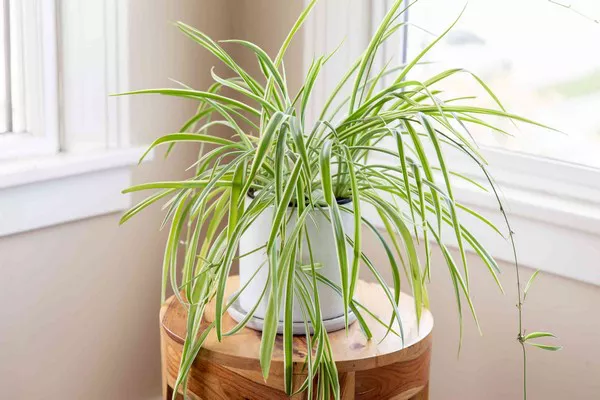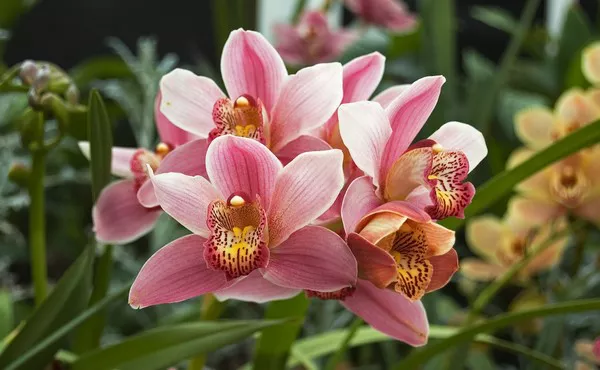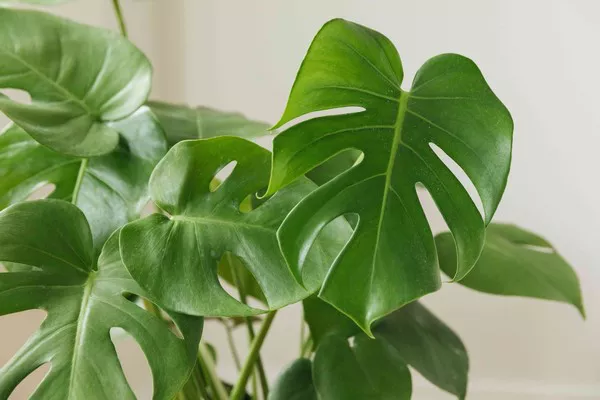Bees play a crucial role in pollination, supporting the health of ecosystems and food production globally. As pollinators, they are vital to the growth of many plants, including those that produce the food we eat. However, with the decline of bee populations due to habitat loss, pesticide use, and climate change, it’s more important than ever to create environments that support these essential insects. One way to do this is by planting climbing plants that provide nectar and pollen for bees. These plants not only beautify vertical spaces in gardens but also serve as essential resources for bee populations.
In this article, we will explore the ten best climbing plants for bees worldwide, detailing their botanical characteristics, growth requirements, and benefits to bees. The plants are chosen for their attractiveness to bees, ease of growth, and ecological significance.
Top 10 Best Climbing Plants for Bees in the World
1. Honeysuckle (Lonicera spp.)
Honeysuckle is a genus of climbing plants that includes over 180 species. Known for its fragrant, tubular flowers, Honeysuckle is a favorite among bees and other pollinators. The flowers produce abundant nectar, which is easily accessible to bees due to their shape.
Attractiveness to Bees
Honeysuckle’s sweet fragrance and bright colors are irresistible to bees. The flowers bloom from late spring to early autumn, providing a prolonged source of nectar. Bees are particularly drawn to species like *Lonicera periclymenum* (Common Honeysuckle), which offers high nectar yields.
Growth Requirements
- Sunlight: Full sun to partial shade
- Soil: Well-drained, fertile soil
- Watering: Regular watering during dry periods
- Climate: Hardy in USDA zones 4-9
Ecological Significance
Honeysuckle not only supports bees but also attracts butterflies and hummingbirds. Its dense foliage provides shelter for wildlife, and its berries serve as food for birds in the autumn.
Data Support
A study by the University of Sussex found that Honeysuckle species are among the top nectar producers in British gardens, offering high sugar content essential for bees’ energy needs.
2. Wisteria (Wisteria spp.)
Wisteria is a genus of flowering plants in the pea family, known for its cascading clusters of fragrant, purple, blue, or white flowers. It is a vigorous climber, often used to adorn pergolas, walls, and trellises.
Attractiveness to Bees
The abundance of flowers produced by Wisteria during its blooming season makes it highly attractive to bees. The flowers are rich in nectar and pollen, providing essential resources during spring and early summer.
Growth Requirements
- Sunlight: Full sun
- Soil: Moist, well-drained soil
- Watering: Moderate watering; drought-tolerant once established
- Climate: Hardy in USDA zones 5-9
Ecological Significance
Wisteria is particularly valuable for early-emerging bees in the spring. The plant’s large flower clusters provide an abundant food source, supporting bees when other plants may not yet be in bloom.
Data Support
Research published in the journal *Ecology* highlights Wisteria’s role in supporting early-season pollinators, particularly bumblebees and solitary bees.
3. Ivy (Hedera helix)
Ivy is a versatile, evergreen climbing plant that can grow on almost any surface. While its flowers are less showy than other climbing plants, Ivy is an essential late-season food source for bees.
Attractiveness to Bees
Ivy blooms in late autumn when few other plants are flowering, providing nectar and pollen at a critical time. The small, greenish-yellow flowers may be inconspicuous, but they are highly attractive to bees, particularly honeybees and bumblebees.
Growth Requirements
- Sunlight: Full sun to full shade
- Soil: Adaptable to various soil types, including poor and compacted soils
- Watering: Minimal once established
- Climate: Hardy in USDA zones 4-9
Ecological Significance
Ivy is crucial for supporting bee populations as they prepare for winter. It also provides shelter for insects and birds and helps to stabilize soil and prevent erosion.
Data Support
A study by the Royal Horticultural Society found that Ivy can sustain over 50% of an urban bee population during autumn, demonstrating its importance as a late-season resource.
See Also: Top 10 Most Beautiful Tree Species in the World
4. Clematis (Clematis spp.)
Clematis is a diverse genus of climbing plants that includes over 300 species. Known for their showy, star-shaped flowers, Clematis plants are popular in gardens worldwide.
Attractiveness to Bees
Clematis flowers vary in shape and size, but many species produce ample nectar and pollen. Bees are particularly attracted to species such as Clematis vitalba (Old Man’s Beard) and Clematis montana (Mountain Clematis), which offer long blooming periods.
Growth Requirements
- Sunlight: Full sun to partial shade
- Soil: Moist, well-drained soil
- Watering: Regular watering; keep soil consistently moist
- Climate: Hardy in USDA zones 4-9
Ecological Significance
Clematis provides food for bees from late spring to early autumn. The plant’s climbing habit makes it an excellent choice for covering fences, trellises, and walls, adding both ecological and aesthetic value to gardens.
Data Support
Research from the University of Bristol indicates that Clematis species are valuable for supporting a variety of bee species, particularly bumblebees and solitary bees.
5. Passionflower (Passiflora spp.)
Passionflower is a genus of over 500 species, known for their intricate, exotic flowers. Native to the Americas, Passionflowers are cultivated worldwide for their beauty and pollinator appeal.
Attractiveness to Bees
The complex structure of Passionflower blooms is highly attractive to bees, particularly carpenter bees and honeybees. The flowers offer a rich source of nectar, and their unique shape allows bees to access the nectar easily.
Growth Requirements
- Sunlight: Full sun to partial shade
- Soil: Well-drained, fertile soil
- Watering: Regular watering during the growing season
- Climate: Hardy in USDA zones 6-10
Ecological Significance
Passionflowers are not only important for bees but also serve as host plants for various butterfly species. The plant’s rapid growth and dense foliage provide shelter for insects and other wildlife.
Data Support
A study published in Annals of Botany found that Passionflowers are among the most effective plants for supporting bee populations in tropical and subtropical regions.
6. Trumpet Vine (Campsis radicans)
Trumpet Vine, also known as Trumpet Creeper, is a vigorous, deciduous climbing plant native to the southeastern United States. It is known for its large, trumpet-shaped flowers that bloom in vibrant shades of orange and red.
Attractiveness to Bees
The tubular flowers of Trumpet Vine are particularly attractive to bees, especially bumblebees and honeybees. The flowers produce a large amount of nectar, making them a valuable resource during the summer months.
Growth Requirements
- Sunlight: Full sun
- Soil: Well-drained, fertile soil
- Watering: Drought-tolerant once established; water during dry periods
- Climate: Hardy in USDA zones 4-9
Ecological Significance
Trumpet Vine is not only a favorite of bees but also attracts hummingbirds. Its vigorous growth can quickly cover fences, arbors, and walls, providing both aesthetic and ecological benefits to gardens.
Data Support
Research by the University of Georgia highlights Trumpet Vine as a key species for supporting bee diversity, particularly in areas where other nectar sources may be scarce.
7. Jasmine (Jasminum spp.)
Jasmine is a genus of flowering plants with over 200 species, known for their fragrant, star-shaped flowers. Native to tropical and subtropical regions, Jasmine is cultivated worldwide for its beauty and scent.
Attractiveness to Bees
Jasmine flowers are rich in nectar and highly attractive to bees, particularly during their blooming season in late spring and summer. Species like Jasminum officinale (Common Jasmine) and Jasminum sambac (Arabian Jasmine) are especially favored by bees.
Growth Requirements
- Sunlight: Full sun to partial shade
- Soil: Well-drained, fertile soil
- Watering: Regular watering during the growing season
- Climate: Hardy in USDA zones 7-10
Ecological Significance
Jasmine not only supports bees but also attracts other pollinators, such as butterflies. Its dense foliage provides shelter for small animals and insects, contributing to garden biodiversity.
Data Support
A study from the Indian Journal of Ecology found that Jasmine species are among the most effective plants for attracting and supporting bee populations in subtropical climates.
See Also: Top 10 Most Rare and Expensive Flowers in the World
8. Sweet Pea (Lathyrus odoratus)
Sweet Pea is an annual climbing plant known for its fragrant, colorful flowers. It is a popular garden plant, particularly in temperate regions, where it is grown for both ornamental and pollinator-friendly purposes.
Attractiveness to Bees
Sweet Pea flowers are rich in nectar and highly attractive to bees, especially honeybees and bumblebees. The flowers bloom from late spring to early summer, providing a valuable food source during the early growing season.
Growth Requirements
- Sunlight: Full sun
- Soil: Well-drained, fertile soil
- Watering: Regular watering; keep soil consistently moist
- Climate: Grows best in temperate climates; hardy in USDA zones 2-11
Ecological Significance
Sweet Pea supports a variety of pollinators, including bees and butterflies. Its climbing habit makes it an excellent choice for adding vertical interest to gardens, and its flowers are often used in cut flower arrangements.
Data Support
Research from the University of California highlights Sweet Pea’s role in supporting early-season pollinators, particularly in temperate regions where other nectar sources may be limited.
9. Bougainvillea (Bougainvillea spp.)
Bougainvillea is a genus of thorny, ornamental vines known for their vibrant, paper-like bracts that surround small, inconspicuous flowers. Native to South America, Bougainvillea is widely cultivated in tropical and subtropical regions.
Attractiveness to Bees
Bougainvillea’s small flowers, though less noticeable, are rich in nectar and attract bees, particularly during the blooming season in spring and summer. The brightly colored bracts also help to attract pollinators from a distance.
Growth Requirements
- Sunlight: Full sun
- Soil: Well-drained, slightly acidic soil
- Watering: Drought-tolerant once established; water during dry periods
- Climate: Hardy in USDA zones 9-11
Ecological Significance
Bougainvillea supports bees and other pollinators in warm climates. Its rapid growth and dense foliage provide shelter for birds and insects, contributing to garden biodiversity.
Data Support
A study published in the Journal of Tropical Ecology found that Bougainvillea is an important plant for supporting bee populations in tropical and subtropical regions, particularly during dry seasons when other nectar sources may be scarce.
10. Climbing Rose (Rosa spp.)
Climbing Roses are a group of rose species and hybrids that naturally climb or can be trained to grow vertically. Known for their beautiful, fragrant flowers, Climbing Roses are popular in gardens worldwide.
Attractiveness to Bees
The flowers of Climbing Roses are rich in nectar and pollen, making them highly attractive to bees. Species like Rosa banksiae (Lady Banks’ Rose) and Rosa ‘Zephirine Drouhin’ are particularly favored by bees for their abundant blooms.
Growth Requirements
- Sunlight: Full sun to partial shade
- Soil: Well-drained, fertile soil
- Watering: Regular watering; keep soil consistently moist
- Climate: Hardy in USDA zones 4-9
Ecological Significance
Climbing Roses support a variety of pollinators, including bees and butterflies. Their flowers provide food for bees throughout the summer, and their dense growth habit offers shelter for birds and insects.
Data Support
Research published in The Rose Annual highlights the importance of Climbing Roses in supporting bee populations, particularly in temperate regions where they can provide a consistent source of nectar and pollen throughout the growing season.
Conclusion
Climbing plants play a vital role in supporting bee populations by providing essential nectar and pollen throughout the growing season. The ten climbing plants highlighted in this article—Honeysuckle, Wisteria, Ivy, Clematis, Passionflower, Trumpet Vine, Jasmine, Sweet Pea, Bougainvillea, and Climbing Rose—are among the best options for creating bee-friendly gardens worldwide.
By incorporating these plants into your garden, you not only enhance its beauty but also contribute to the conservation of bees and other pollinators. Each of these plants has unique characteristics that make them valuable to bees, whether it’s the timing of their blooms, the richness of their nectar, or their ability to thrive in various climates and conditions.
Supporting bees is crucial for maintaining biodiversity and ensuring the continued pollination of crops and wild plants. By choosing the right climbing plants, you can create a garden that serves as a haven for bees, helping to sustain their populations for generations to come.
You Might Be Interested In:



![10 Most Richest Cities in the United States [Revealed!]](https://www.validdownloads.com/wp-content/uploads/2023/12/Manjula-Pothos.webp)





















